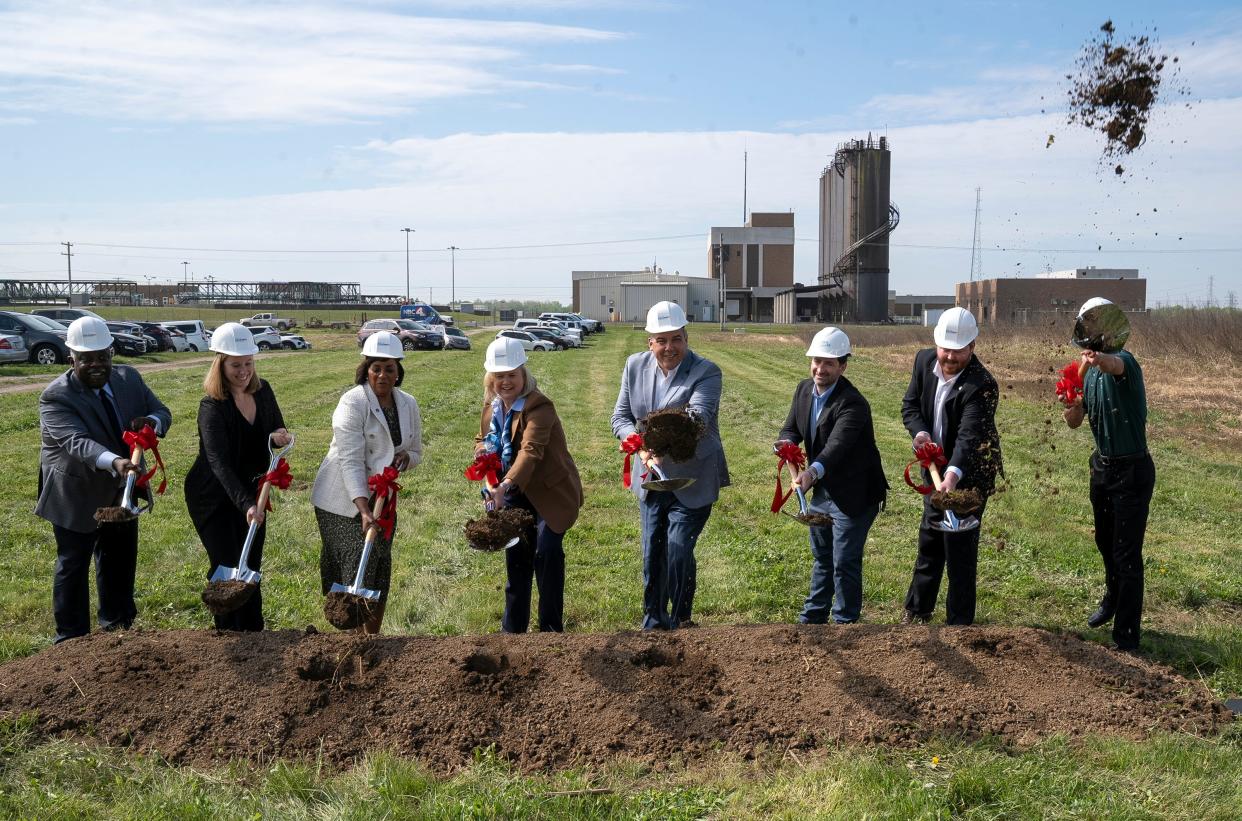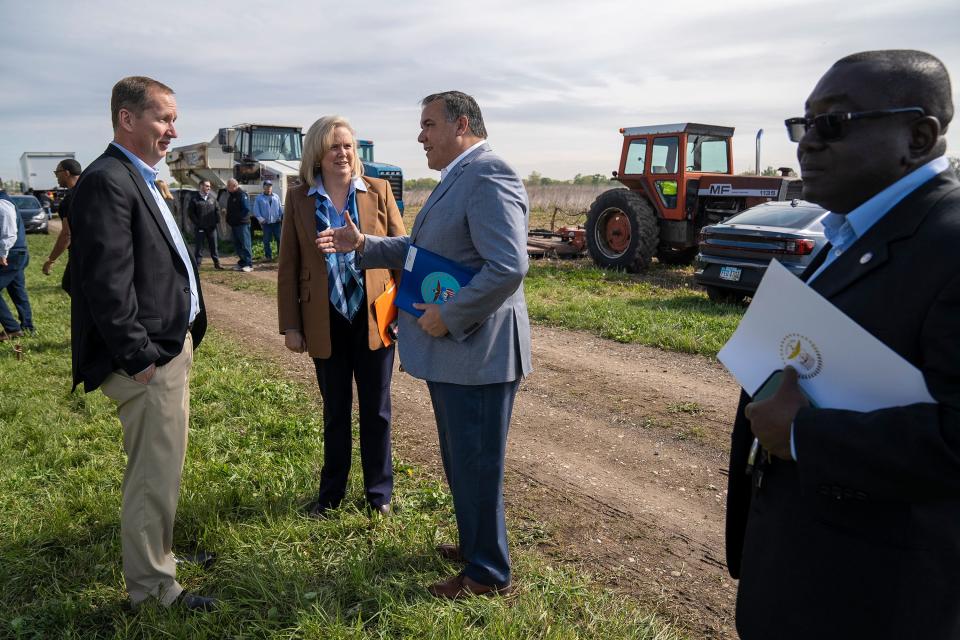City Division of Power agreement funds local solar project for first time ever

Mayor Andrew J. Ginther announced Thursday that his administration had signed an agreement for a private firm to construct two solar farms on two city-owned pieces of land on the South Side that would provide power to the city's Division of Power, the historic municipally owned utility that provides electricity for streetlights and about 17,000 mostly residential customers.
Ginther took center stage under a tent on a 155-acre tract of farmland at 5414 Parsons Avenue, just north of a city drinking water-treatment plant, to announce that projects on it and another piece of city land adjacent to a former city garbage landfill near the intersection of I-71 and I-270 were now officially under construction.
The two solar facilities together would provide 45 megawatts of power, which the city said was enough to provide power to about 7,500 homes and will supply about 10% of the Division of Power's needs, officials said.
None of the power will go to the customers of the city's municipal electric aggregation program, Clean Energy Columbus, which is provided power by an affiliate of Columbus-based energy giant AEP. The city's municipally owned utility had its origin in the 1890's to generate electricity from burning coal to power city streetlights, but that former coal-fired generation plant near Lower.com Field near Downtown was shut down decades ago in response to environmental concerns.
The city's Department of Utilities signed an agreement with NextEra Energy, one of the nation's largest investors in utility infrastructure, in December of 2021, according to Division of Power and NextEra representatives at the event.
The terms of the agreement weren't provided — including how much the city has agreed to pay for the power on a per kWh basis for the next three decades, which city officials claimed is a NextEra trade secret.

Ginther, running for another four-year term in November, and his administration have made numerous projections regarding the completion dates of Clean Energy Columbus' new local generation projects, none of which have been completed to date. No green energy is yet on the horizon being generated through newly constructed locally sourced solar and wind plants, as promised to voters who approved the city's AEP-affiliated "green energy" aggregation program in November 2020, with city estimates now calling for "mid-decade" startups due to permitting and supply chain issues.
But none of those types of regulatory issues will hinder this project, promised Adam Siegelstein, director of renewables development at NextEra. The company is waiting on "one last city permit" to break ground, he said, even though construction equipment was already parked at the site.
Asked when that ground-breaking would occur, he responded: "As soon as the city gives us the last permit — hopefully imminently."
"We'll be energized before the year is up," he added, saying the firm doesn't anticipate any supply chain issues delaying delivery of solar panels, a problem that has delayed the city's other aggregation-side facilities.
The deal was signed by Ann Aubry, a deputy utilities director, a month after she took the post of interim city utilities director following the departure of Tracie Davies, who had left to become Delaware County administrator. A power-purchase agreement, where the city guarantees to purchase the power in order to fund the solar fields, will be in place for the next 30 years, Siegelstein said.
Despite the historic nature of the contract, Ginther made no public announcements for the 17 months after its signing.
That all changed Thursday when, following a performance by a youth choir that sang "Somewhere Over the Rainbow," Ginther finally publicized the plan, saying climate change is an emergency that will threaten Columbus neighborhoods.
"It's incumbent on us to act," Ginther said. "...Moving to clean energy is critical to meeting our community's ambitious climate goals."

"This isn't just a plan that sits on a shelf. We are taking action, and the city is leading by example."
Ginther said the Parson's site would provide 27 megawatts, and the site further to the north on Jackson Pike another 18 megawatts. While the Jackson Pike location is on a former landfill, it is not to be confused with another adjacent project, "Columbus Solar Park," a 50-megawatt solar farm about two miles south of Downtown, atop a closed Solid Waste Authority of Central Ohio (SWACO) landfill.
That project was supposed to be completed last December, with 100% of its power sold to Green Energy Columbus. But it, too, is currently stalled because of regulatory and supply-chain issues, SWACO has said.
wbush@gannett.com
@ReporterBush
This article originally appeared on The Columbus Dispatch: City utility announced 2021 agreement for solar 17 months later

